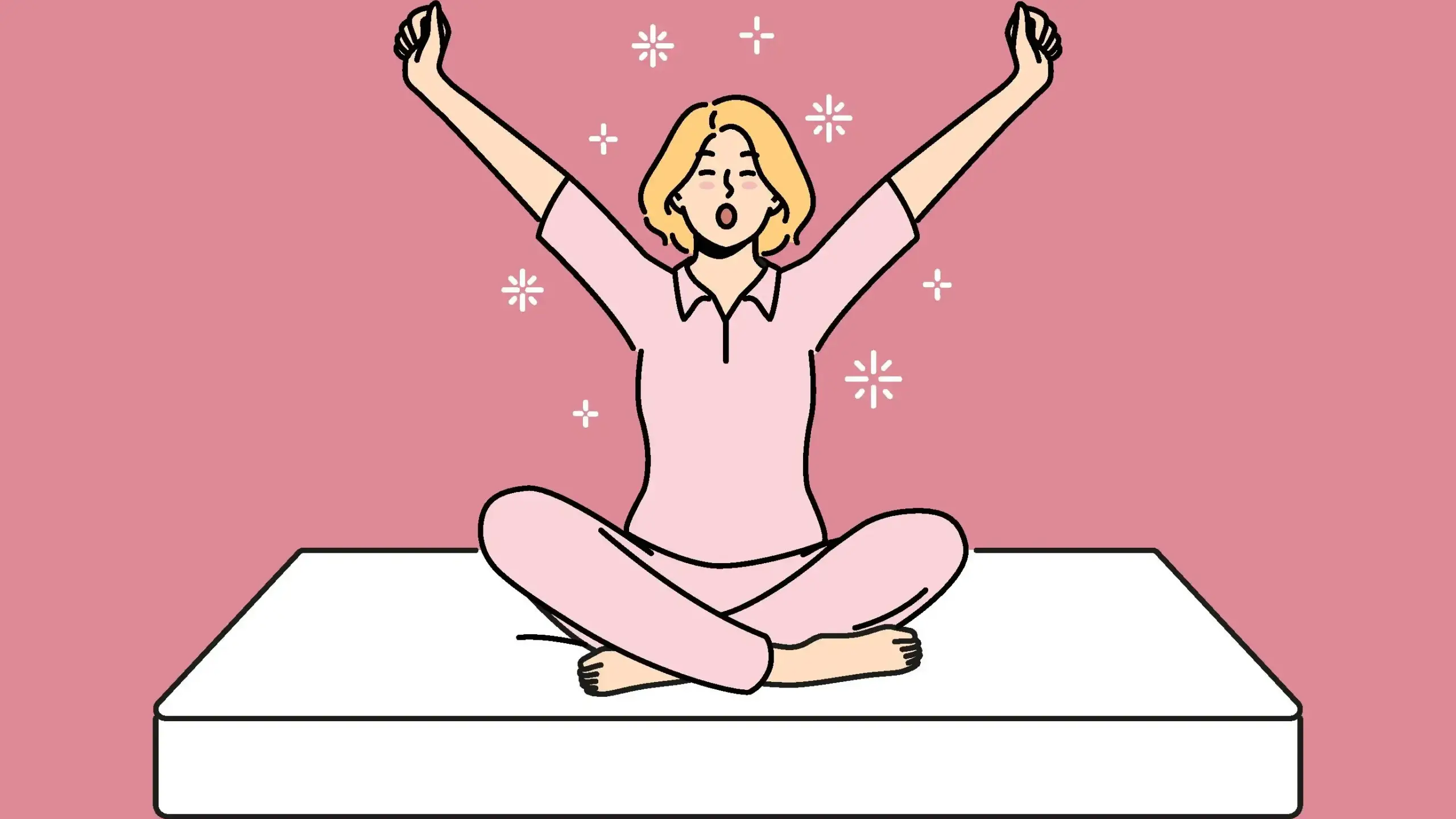Use these lower back pain stretches in bed to relieve pain and increase mobility. Many people struggle with lower back pain, especially in the morning when muscles are tight and joints feel stiff. In fact, it’s one of the most common reasons people in the US visit a doctor. If you are waking in pain, simple stretches done before even getting out of bed can provide much-needed relief. As a chiropractic and acupuncture specialist, I work with individuals daily to manage pain effectively, and I know that consistent, gentle stretching can play a crucial role in back pain relief and prevention.
In this post, we’ll explore different lower back pain stretches in bed, the common causes of lower back pain, daytime tips for pain prevention, and how treatments like chiropractic adjustments, acupuncture, and dry needling can provide lasting relief. If you’ve been dealing with persistent lower back pain, consider scheduling an appointment with our office to get to the root of your discomfort.
Table of Contents
ToggleLower Back Pain Stretches in Bed: Understanding the Causes of Lower Back Pain
Lower back pain is a complex condition with various causes. Understanding what might be contributing to your discomfort can help you make changes to prevent pain from worsening.
Common Causes of Lower Back Pain:
- Poor Sleep Positioning: Sleeping in a way that strains your back, such as on a soft mattress or in a curled position, can lead to muscle stiffness and joint pain upon waking.
- Weak Core Muscles: The core supports the lower back, so weak abdominal and back muscles can increase strain on the lumbar spine.
- Sedentary Lifestyle: Long hours sitting, particularly with poor posture, can tighten muscles and lead to chronic pain.
- Spinal Misalignment: Misalignments or subluxations in the spine, often due to injury, poor posture, or repetitive strain, can create pressure on surrounding muscles and nerves, leading to pain and discomfort.
- Injury or Overuse: Strained muscles, ligaments, or tendons from lifting heavy objects or repetitive movements can lead to chronic pain if not addressed properly.
- Stress and Tension: Emotional stress often manifests physically in muscle tension, particularly in the lower back.
Understanding these root causes can help guide you toward effective solutions. If you’re unsure of the exact cause of your pain, a chiropractic evaluation can help identify the underlying issues contributing to your discomfort.
Best Lower Back Pain Stretches in Bed
After a night of limited movement, stretching in bed is an excellent way to gently warm up and relieve morning stiffness. Here are a few stretches to help you ease into the day:
Knee to Chest Stretch
Instructions: Lie on your back, bring one knee toward your chest, hold for 15–30 seconds, and switch to the other knee. For a deeper stretch, bring both knees to your chest and rock gently.
Supine Twist
Instructions: Lie on your back, drop your knees to one side while keeping your shoulders on the bed. Hold for 20–30 seconds, then repeat on the other side.
Cat and Camel Stretch
Instructions: Begin on all fours. Arch your back, lifting your head and tailbone (Cow Position), then round your back, pulling your belly button toward your spine (Cat Position). Repeat for 30–60 seconds.
Pelvic Tilts
Instructions: Lie on your back, tighten your abdominal muscles to press your lower back into the mattress. Hold for a few seconds, then relax. Repeat 10–15 times.
While lower back pain stretches in bed and morning stretches are beneficial, adopting a proactive approach to pain prevention throughout the day can make a significant difference. Here are some daily tips to help protect your lower back and improve your overall health:
- Practice Good Posture: Be mindful of your posture, especially when sitting. Aim to sit with both feet flat on the ground, back straight, and shoulders relaxed. Using a chair with lumbar support can also help.
- Stay Active: Prolonged sitting or standing can lead to tight muscles and joint stiffness. Make it a habit to move around every 30–60 minutes to keep blood flowing and muscles flexible.
- Engage in Core Exercises: A strong core reduces strain on the lower back. Posture exercises like planks, bridges, and gentle abdominal crunches can help strengthen these supporting muscles.
- Lift with Care: Use your legs—not your back—and keep the load close to your body when lifting objects. Avoid twisting motions while lifting to reduce strain on the lower back.
- Use Ergonomic Supports: Investing in ergonomic furniture, including chairs, keyboards, and footrests, can help maintain better alignment during daily activities.
- Manage Stress Levels: Since stress can lead to physical tension, incorporating relaxation techniques like deep breathing, mindfulness, or yoga can help reduce muscle tightness in the lower back.
The Benefits of Chiropractic, Acupuncture, and Dry Needling for Back Pain
For those experiencing chronic lower back pain, lower back pain stretches in bed may not be enough. Specialized treatments like chiropractic adjustments, acupuncture, and dry needling can offer powerful relief by targeting pain at its source and providing long-lasting comfort.
Chiropractic Care: Restoring Joint Motion for Pain Relief
Chiropractic care identifies and corrects misalignments in the spine (subluxations) that can lead to pain, muscle tension, and nerve interference. The Chiropractic adjustment restores motion to fixed (subluxated) vertebrae through precise, manual adjustments. The adjustment also relieves muscle tightness, reduces joint inflammation, and removes pressure on the nerve. These critical changes reduce pain and improve the body’s natural healing abilities.
Benefits of Chiropractic Care for Lower Back Pain:
- Reduces nerve interference that may be causing pain or discomfort
- Improves range of motion and flexibility
- Enhances posture, supporting better spinal health
- Alleviates muscle tightness by addressing the root cause of misalignment
Studies have shown that chiropractic adjustments can be particularly effective for lower back pain. They often provide immediate relief and reduce the need for more invasive treatments.
Acupuncture: Restoring Balance and Reducing Pain
Acupuncture, rooted in traditional Chinese medicine, involves inserting fine needles at specific points on the body to stimulate natural healing processes. By targeting meridians related to the lower back, acupuncture helps to balance the flow of energy (qi), reducing pain and inflammation.
Benefits of Acupuncture for Lower Back Pain:
- Reduces pain by stimulating the release of endorphins and other natural painkillers
- Improves blood circulation to the affected area, aiding in faster healing
- Reduces inflammation that may be contributing to chronic pain
- Provides a relaxing effect, which helps to relieve tension in the lower back
Acupuncture is an excellent option for individuals seeking a non-invasive, holistic approach to pain relief, especially when combined with chiropractic care for comprehensive support.
Dry Needling: Targeting Trigger Points for Muscle Relief
Dry needling involves inserting thin needles into specific trigger points within muscles. This technique is especially effective for myofascial pain, a common contributor to lower back pain. By releasing these tight knots, dry needling reduces muscle tension and improves mobility.
Benefits of Dry Needling for Lower Back Pain:
- Releases tight trigger points, improving muscle flexibility
- Reduces pain by decreasing muscle tension
- Promotes circulation within muscles, enhancing recovery and reducing pain
- Complements chiropractic adjustments by relaxing muscles and improving overall mobility
Dry needling can be an effective treatment for chronic lower back pain, particularly when combined with chiropractic adjustments and acupuncture, as it directly addresses muscle tightness and tension.
How We Can Help You: Combining Lower Back Pain Stretches in Bed With Treatments for Optimal Relief
At our integrated Denver chiropractic clinic, we believe in a holistic approach to managing lower back pain. Combining chiropractic adjustments with acupuncture and dry needling, we address pain from multiple angles for a more complete and lasting relief experience. Each treatment plan is customized to meet the unique needs of our patients, ensuring we target the specific causes of their pain.
- Initial Assessment: We begin with a comprehensive evaluation to identify the underlying causes of your lower back pain, including physical exams, posture analysis, and medical history.
- Personalized Treatment Plan: Based on your assessment, we develop a customized plan that may include chiropractic adjustments to realign the spine, acupuncture to balance energy and reduce inflammation, and dry needling to release muscle tension.
- Follow-Up and Prevention: In addition to in-office treatments, we provide guidance on exercises and lifestyle adjustments (like the best to help maintain your progress, ensuring long-term comfort and a better quality of life.
Lower Back Pain Stretches in Bed Not Enough? Schedule an Appointment Today!
Morning stiffness and chronic lower back pain don’t have to define your day. Combining the best core exercises with lower back pain stretches in bed, and posture exercises can make a big difference. However, if your back pain persists, Chiropractic care, acupuncture, and dry needling can all be used to address the root causes of pain and offer long-lasting relief.
Don’t resort to potentially dangerous medications like Diclofenac (Voltaren) or just wait and hope to start feeling better. We are conveniently located for patients in Arvada, Denver, and Wheat Ridge, CO. Schedule an appointment or call our office to learn why we are the Chiropractor Denver trusts to achieve a pain-free life.
** Thank you to Physitrack.com for the use of their videos
Clinic Director, Chiropractor
Integrative Health and Rehabilitation
Denver, CO
Dr. James Doran brings over 25 years of experience in chiropractic and integrative care. He specializes in treating the root causes of back pain, neck pain, and headaches using evidence-based methods such as chiropractic adjustments, acupuncture, dry needling, low-level laser therapy, and bioidentical hormone replacement. With a background in human nutrition and a commitment to whole-person wellness, Dr. Doran’s office is conveniently located for patients in Denver, Arvada, and Wheat Ridge achieve long-lasting relief.

Ready for an expert opinion? Get in touch today!
With a legacy of more than 25 years, our team specializes in helping individuals triumph over back pain, neck discomfort, and persistent headaches, all without relying on addictive medications or risky surgical procedures.






